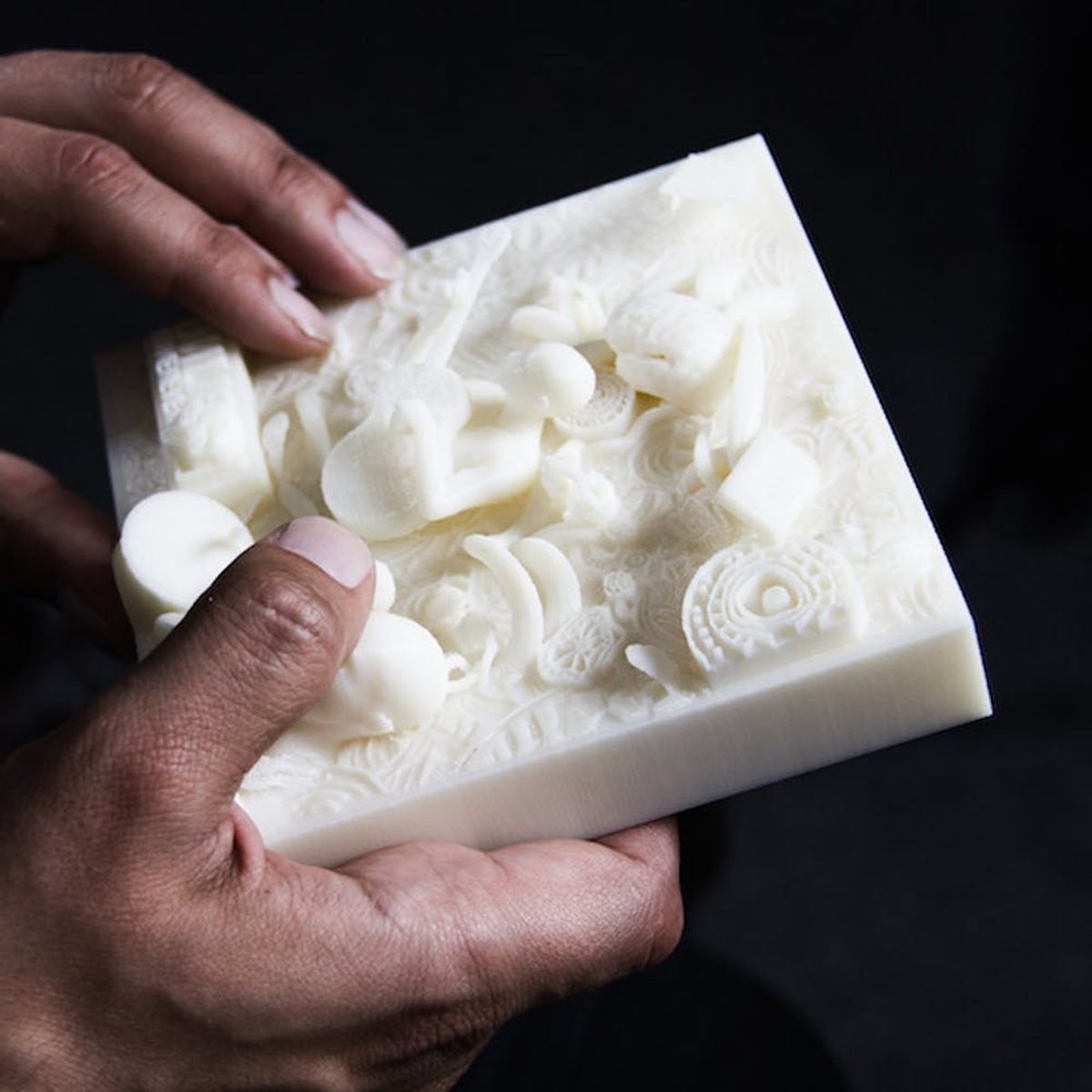3D printing is changing the face of medicine.
10 Life-Saving Medical Innovations Thanks to 3D Printing

3D printing is pretty darn cool. We know it can print makeup, furniture and more, but did you know it can also save lives? Dr. Glenn Green, associate professor of pediatric otolaryngology at the University of Michigan, recently saved a baby’s life by creating a tracheal splint out of a biopolymer that held open the baby’s collapsed bronchus so he could breathe. According to the LA Times, the splint is made to grow along with the child, and over time, as the cartilage in the area grows stronger, the splint will dissolve naturally, like biodegradable stitches.
1. Printed skin: Printed skin can be useful for cosmetic purposes, but it can also save lives. An engineering team at the University of Toronto took home the James Dyson Award last year for creating a 3D bioprinter called the PrintAlive that can print large, continuous layers of tissue, down to follicles and sweat glands, onto a hydrogel, to make painful skin grafts a thing of the past. Using the subject’s own cells, so that the body won’t reject the sample, the printer may be the answer for burn victims. (via PSFK)
2. Touchable Memories: A 3D printer recreates dimensional versions of a person’s old photographs and helps blind people see and feel their past again. Touchable Memories is a project started by Spanish creative agency Lola, who wanted to reflect on the human condition using 3D printing technology. According to their site, they are conducting “a social experiment where [they] give technology an innovative application… to achieve incredible results… Because wonderful things can be achieved when technology is for all of us.” (via Pirate3D)
3. A Cast that Cuts Healing Time: According to an article by TechCrunch, this cast was created by a Turkish student using 3D printing. The honeycomb shape is one of the sturdiest structures found in nature, and the openings allow for ultrasonic drivers — which are said to increase the rate of healing — to be placed directly on the skin. The inventor says that this can heal some breaks up to 80 percent faster. (via TechCrunch)
4. Prosthetics: Leon McCarthy is one lucky kid. He first made headlines in 2013 when his father printed Leon a “cyborg” (that’s what his friends called it!) prosthetic hand for about $10. Leon was born without several fingers, and when his father first heard about 3D-printed prosthetics, he reached out to some of the pioneers of the field and found an incredible at-home solution that would change his son’s life forever. (via Fox)
5. Printed Pills: Studies have shown that the shape of a pill can actually determine the rate at which medication is released into a patient’s body. Some may need rapid release, while others may need it to be distributed gradually. There are several shapes that are nearly impossible to make traditionally, and currently, pills only come in a handful of shapes and sizes — and that’s where 3D printing comes in. 3D-printed pills can be engineered to take any shape to help better treat illness. (via 3D Print)
6. Affordable Retinal Cameras: Retinal cameras are crucial to preventative eye care and are much needed around the world, but they can cost upwards of $20,000 for one device. Dr. Chiong of OphthalmicDocs and his team found a way to use a 3D-printed apparatus and few lenses to turn any smartphone into an retinal camera for about $33. They also made the design open source and free to download for users around the world. (via 3D Printing Industry)
7. Jaw Implant: South African doctors managed to successfully use 3D-printed jaw bone implants to reshape the faces of two men. 3D printers are excellent for printing bone implants, like ankle replacements, because the are extremely sturdy (they’re made with titanium powder!) and are perfectly customized to the patient. (via Health24)
8. Prosthetic Eyes: Eye cancer can be extremely fast moving and fatal. Thus, treatment often involves removal of the affected eye. Unfortunately, prosthetics can be extremely expensive, costing up to $15,000. Dr. David T. Tse of the University of Miami is aiming to create a fast and affordable solution with 3D-printed prostheses for those who can’t afford the steep price tag. (via Brit + Co)
9. Bone Cancer Treatment: In a study published earlier this year, scientists found a way to 3D print custom, biodegradable implants to aid in more effectively treating bone infections and bone cancer. The most exciting part is that this groundbreaking finding was created using very basic desktop 3D printers. (via 3D Printing Industry)
10. Perfectly Fitted Heart Implants: Dr. Igor Efimov, PhD at the School of Engineering & Applied Science at Washington University in St. Louis and his team found a way to create an elastic silicon membrane that is precisely the shape of a patient’s heart and can adhere to the surface. The membrane is covered with 3D printed sensors that measure various heart markers and can even deliver a pulse of electricity in cases of irregular heartbeat to save a person’s life. Science is ah-ma-zing. (via Mashable)
Want to learn more about this kind of technology at Re:Make 2015? Get your tickets here!
What do you think of 3D printing’s role in medicine? Share with us in the comments below!











